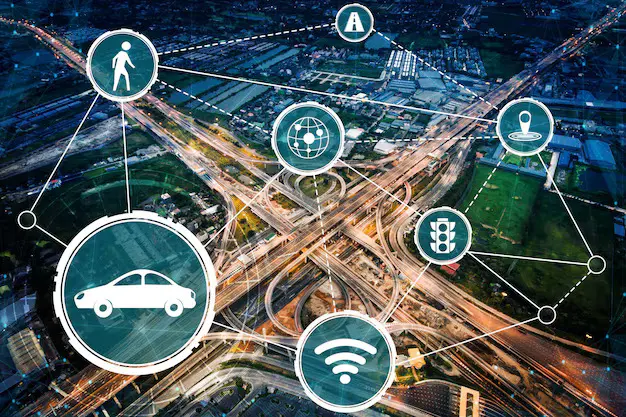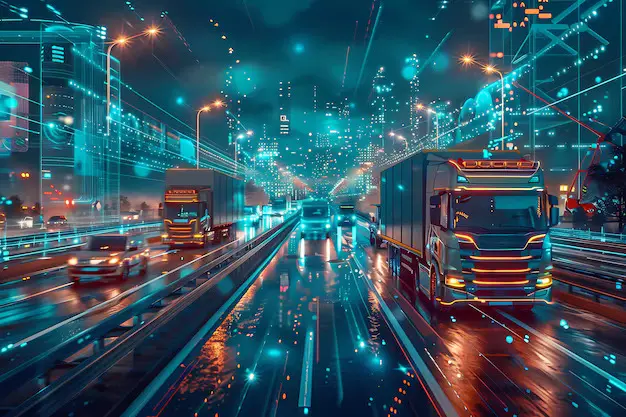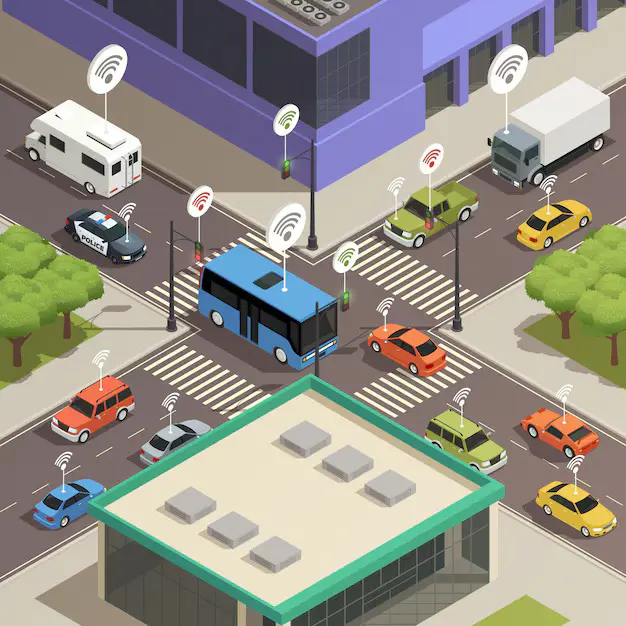
What is Smart Transportation? Everything You Need to Know About That
Industries & Technologies
A Smart Transportation System is an innovative approach implemented in smart urban areas to boost safety, improve mobility, and decrease environmental pollution. It incorporates IoT-integrated bus stops that feature sensors to track environmental factors and passenger numbers, promoting energy-efficient practices and delivering information to users through a dedicated mobile app.
Smart Transportation signifies the application of modern technologies to improve road safety, increase driving comfort, and enhance traffic efficiency through solutions such as smart parking systems, autonomous driving technologies, and upgraded public transportation services.
What is Smart Transportation?
Smart transportation refers to the integrated application of modern technologies and management strategies into transportation systems to enhance efficiency, safety, and sustainability. It involves the use of advanced technologies such as cloud computing, wireless communication, location-based services, computer vision, and the Internet of Things (IoT) to improve the movement of people and goods
In a smart city environment, a smart transportation system is a necessity. It is used to enhance safety and mobility, and to reduce environmental pollution.

To better understand how smart devices changed transportation, consider the role traffic lights play on the road. The simplest version of this technology operates on timers and helps avoid collisions. Simultaneously, smart lights equipped with sensors and appropriate processing algorithms detect commuters nearby and cycle through the lights accordingly to make the transit faster and safer.
Benefits of Smart Transport:
- Optimize Traffic Flow and Fuel Efficiency
- Create a Safer Traffic Environment
- Promote Environmental Sustainability
- Boost Economies
- Improve User Experience
Key Applications of IIoT in Smart Transportation:
1. Real-Time Vehicle Tracking & Fleet Management
- IIoT sensors provide real-time GPS, fuel, and engine health data.
- Enables route optimization, asset tracking, and live driver behavior monitoring.
.

2. Predictive Maintenance
- Embedded IIoT sensors detect vibration, temperature, and wear in vehicles and infrastructure (e.g., tracks, roads, bridges).
- Prevents breakdowns, reduces downtime, and extends equipment life.
3. Traffic Flow Optimization
- Smart traffic signals and road sensors collect data on vehicle density, speed, and congestion.
- Centralized traffic control systems adjust flow dynamically using IIoT data.
4. Smart Parking Systems
- IIoT-enabled parking sensors detect availability and send updates to mobile apps or signs.
- Reduces idle driving, fuel consumption, and urban congestion.
5. Vehicle-to-Infrastructure (V2I) Communication
- IIoT enables secure and fast communication between vehicles and smart infrastructure (traffic lights, road signs).
- Helps with navigation, accident avoidance, and efficient routing.
6. Environmental Monitoring
- Sensors track pollution, noise, and weather conditions.
- Authorities use this data to manage traffic restrictions and public alerts.
7. Rail and Port Automation
- IIoT controls smart logistics hubs like rail yards, seaports, and warehouses.
- Improves cargo handling, loading/unloading, and safety compliance.
Smart Transportation is impossible without the Internet of Things(IoT). Sensors and gauges connect to IoT platforms that analyze incoming data. The analysis results become the basis used to further plan the work of systems and the operation of individual elements which are parts of those systems.
Smart transportation systems are transforming the way cities manage traffic, public transit, and urban mobility. By leveraging real-time data analytics, ITS, and public transit optimization strategies, cities can enhance urban mobility, reduce congestion, and promote sustainable transportation. While implementing smart transportation systems poses several challenges, the benefits and opportunities they offer make them an essential component of modern urban infrastructure.
Example Use Case: IIoT in a Smart City
A smart city integrates IIoT-based traffic sensors, smart bus stops, electric fleet chargers, and cloud-connected traffic management systems. Together, they:
- Reduce city traffic congestion by 30%
- Cut emissions by 20%
- Increase public transport reliability by 40%.